More than anyone, I know what it’s like to get wrapped up in the numbers of track and field. It is a numbers-based sport after all; athletes are timed against the clock or measured against the tape, opening up a realm of sporting statistics.
It’s easy to forget about the stories behind some of the incredible people involved in this sport. Of course, any athlete who reaches world-class level is amazing for that reason alone. But there are some – like the ones below – who go beyond that.
Marla Runyan
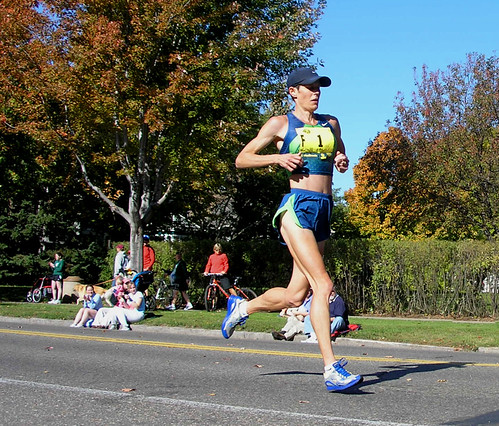 Most people can only dream of running a marathon in 2:27. Marla Runyan is one of the few women to have done so, making her the ninth-fastest US marathon runner in history.
Most people can only dream of running a marathon in 2:27. Marla Runyan is one of the few women to have done so, making her the ninth-fastest US marathon runner in history.
Her other PBs are good too, having run 4:02.95 for 1500m, 8:39.36 for 3000m, 14:59.20 for 5000m, 31:46 for 10km and a national record of 65:52 for 20km.
Winner of nine national titles over various distances, Runyan has represented the USA at two Olympic Games and two World Championships. She also won the 1999 Pan-American Games 1500m title.
Unusually for a distance runner, Runyan is also a talented heptathlete. In 1996 she scored a highly respectable 5761 with her series including marks of 1.77m for the high jump and 13.89 in the 100m hurdles – both performances superior to many specialists in those events.
But that’s not the most amazing thing about Runyan. She has achieved all of this in spite of being blind.
Diagnosed with Stargardts disease at an early age, she won four gold medals at the 1992 Paralympic Games, winning the 100m, 200m, 400m and long jump.
Eight years later she became the first ever Paralympian to compete in the Olympic Games.
Dieudonne Disi
 When Dieudonne Disi won the gold medal in the 10,000m at the 2005 Francophone Games, the organisers didn’t have the Rwandan national anthem, so Disi grabbed the microphone and sang it while stood on the podium.
When Dieudonne Disi won the gold medal in the 10,000m at the 2005 Francophone Games, the organisers didn’t have the Rwandan national anthem, so Disi grabbed the microphone and sang it while stood on the podium.
It was his first major title, but his family weren’t there to share the moment with him. They had all died 11 years prior during the Rwanda Genocide.
Just 13 years old at the time, Disi witnessed the murder of his mother as he hid in the garden. When darkness fell – and with his father and eight brothers having also been killed just hours earlier – Disi began a terrifying 50km journey on foot towards the Burundian border.
He returned to his homeland in 2000 and took up running. He quickly showed promise and represented his country at two Olympic Games and various World Championships.
Four years after his Francophone Games triumph, he successfully defended his title in Beirut in 2009, winning another gold medal.
This time he didn’t have to sing his national anthem.
CB Fry
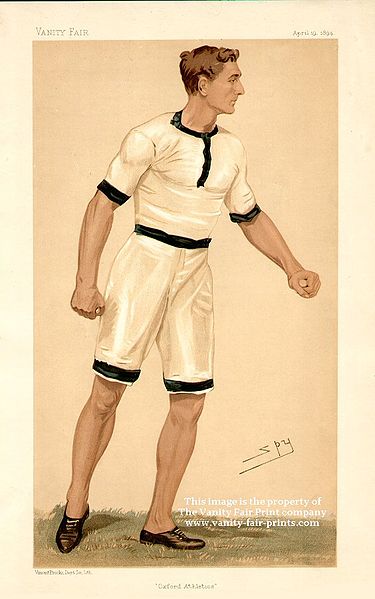 Charles Bugess Fry was a great athlete and in 1893 he broke the world long jump record. He was also a talented sprinter, high jumper and hurdler.
Charles Bugess Fry was a great athlete and in 1893 he broke the world long jump record. He was also a talented sprinter, high jumper and hurdler.
But athletics was very much his secondary sport as he was one of the best cricketers of his generation, scoring 30,886 first-class runs and playing for England over a span of 16 years.
As if that wasn’t enough, Fry was also an excellent football player. He made the England team in 1901 and played for Southampton in the 1902 FA Cup final. He also excelled in rugby and played for Oxford University and the Barbarians.
After he retired from competitive sport, Fry became involved in politics, publishing, journalism and broadcasting.
But the best thing about him was his party trick. He could leap from a stationary position on the floor backwards on to a mantelpiece.
Gail Devers
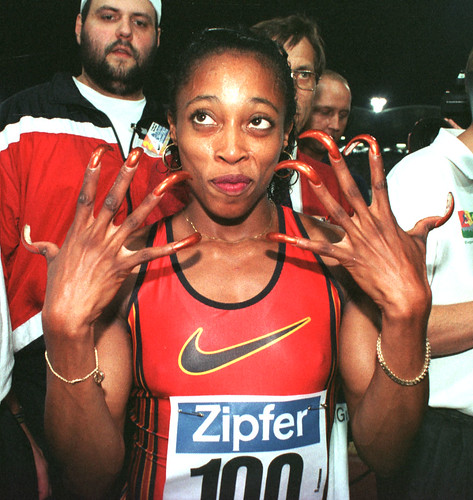 USA’s Gail Devers is one of just two women in history to win back-to-back Olympic titles in the 100m. But just 18 months prior to winning her first Olympic gold medal, she was told she would need to have both feet amputated.
USA’s Gail Devers is one of just two women in history to win back-to-back Olympic titles in the 100m. But just 18 months prior to winning her first Olympic gold medal, she was told she would need to have both feet amputated.
In 1988 Devers equalled the US 100m hurdles record and went to the Seoul Olympics as a medal hope. But in the weeks leading up to the Games she began suffering from hair loss and felt lethargic. After exiting the Olympics in the semi-finals, she was diagnosed with Graves’ disease, an illness of the thyroid gland.
She was given radiation treatment but the dose proved to be too strong. Her thyroid was almost destroyed and her feet blistered up to the extent she could not walk on them.
After avoiding amputation, Devers began to respond to medication. One month later, in March 1991, she resumed training. Five months later she took the silver medal at the World Championships.
The following year she won 100m gold in Barcelona, then successfully defended her title in Atlanta four years later. During her career she also won three world outdoor titles and four world indoor titles.
Joseph Ebuya
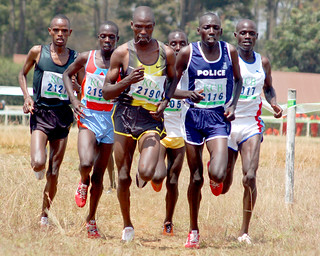 Many Kenyan athletes originate from the Kalenjin tribe and run to and from school every day from a young age. It has become a familar story behind their most successful athletes.
Many Kenyan athletes originate from the Kalenjin tribe and run to and from school every day from a young age. It has become a familar story behind their most successful athletes.
But Joseph Ebuya does not come from a running tribe, nor did he run to school. In fact, he didn’t even go to school.
Born in the Turkana District, an area not known for producing runners, Ebuya’s family were too poor to send him to school and instead he worked on the family farm. He took up running as a way out of abject poverty.
It worked. He entered his first competition in 2003, aged just 15. Seven years later he defeated the great Kenenisa Bekele at the Great Edinburgh Cross, then two months later won the world cross-country title.
He has now bought his family a 10-acre farm and has built a house for them. “Through athletes I have made earnings which will help improve my family’s life,” he said. “I want to change their lives.”
Jehue Gordon
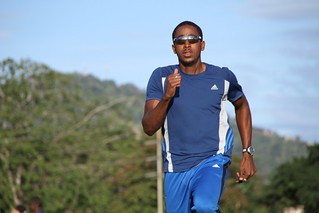 No one in athletics knew who Jehue Gordon was back in 2008. He went to the Olympic Games in Beijing that year, but not as a competitor. Instead he went there to soak up the atmosphere and to experience what it was like being in an Olympic stadium.
No one in athletics knew who Jehue Gordon was back in 2008. He went to the Olympic Games in Beijing that year, but not as a competitor. Instead he went there to soak up the atmosphere and to experience what it was like being in an Olympic stadium.
But when he went back to Trinidad & Tobago, he found that his family home had been lost in a mud slide. It was a huge financial strain on his parents, not helped by the fact that his father was an alcoholic.
He knew he had to do something to help his family out of the situation, so he threw all his efforts into the one thing he had left; athletics.
Within one year, aged just 17, he made it to the World Championships final, becoming the youngest ever athlete to do so in the 400m hurdles. Still considered a rank outsider, he came within three hundredths of a second of winning a medal, smashed the national senior record with 48.26, a world age-17 best.
Four years later, he won the World Championships. Now everyone in athletics knows who Jehue Gordon is.
Fatima Whitbread
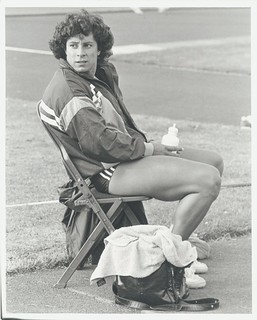 Javelin thrower Fatima Whitbread was one of Britain’s top athletes of the 1980s. Twice an Olympic medallist, she broke the world record in 1986 and then triumphed at the World Championships one year later, contributing to her winning the BBC Sports Personality of the Year award.
Javelin thrower Fatima Whitbread was one of Britain’s top athletes of the 1980s. Twice an Olympic medallist, she broke the world record in 1986 and then triumphed at the World Championships one year later, contributing to her winning the BBC Sports Personality of the Year award.
But she only happened to fall into javelin throwing when she was adopted at age 14 by athletics coach Margaret Whitbread. Up until that point, Whitbread’s life had not been a happy one.
Born in London to a Turkish-Cypriot mother and a Greek-Cypriot father, Whitbread was abandoned as a baby and spent four months in hospital recovering from malnutrition.
She spent most of her childhood in children’s homes but would occasionally spend time with her birth mother. On one visit, at the age of 13, she was raped by her mother’s boyfriend. Her mother held a knife to Whitbread’s throat, telling her to shut up.
Thankfully, several months later, she met the woman she calls her ‘true mother’. Soon after, she picked up a javelin for the first time. Just four years later, she won the European junior title – her first of many international medals.
Babe Didrikson
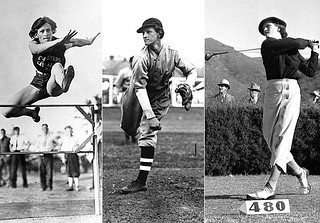 Athletics, golf, basketball, baseball, tennis, swimming, diving, boxing, volleyball, handball, bowling, billiard, skating and cycling. This isn’t a game of sporting word association; these are the sports that were in Babe Didrikson’s repertoire.
Athletics, golf, basketball, baseball, tennis, swimming, diving, boxing, volleyball, handball, bowling, billiard, skating and cycling. This isn’t a game of sporting word association; these are the sports that were in Babe Didrikson’s repertoire.
One month after her 21st birthday, Didrikson became one of the stars of the 1932 Olympics. She won gold medals in the 80m hurdles and javelin, and silver in the high jump. This was at a time when there were only six events on offer for women. Didrikson won medals in half of them and set world records in two.
At that year’s AAU Championships, in the space of one afternoon she set four world records – in the javelin, 80m hurdles, high jump and baseball throw. Her team won the championships, even though she was the sole member of her team.
She later turned to golf and achieved even more success. She notched up 41 wins on the LPGA Tour, including 10 victories in LPGA Major Championships. Such was her dominance in the women’s game, she began competing in men’s tournaments on the PGA Tour.
In 1999, The Associated Press voted her the woman athlete of the 20th century.
Ten years later, Marge Simpson dressed up as Didrikson in an episode of The Simpsons.




